- 9:00 am
Ten years in, the iPad is still capable of surprising us—and Apple
Apple’s Bob Borchers and John Ternus on how Apple’s tablet became a line of tablets—including a new iPad Air that gives the iPad Pro a run for its money.
More than most companies, Apple has often seemed reluctant to wax too nostalgic about its past—as if looking back was a hindrance to the more important matter of building the next great thing. But it does sometimes acknowledge milestones as it talks up what’s new. And so CEO Tim Cook prefaced the unveiling of two new iPads at Apple’s virtual product launch event last week with a mention that the iPad turns 10 this year.
These latest models—the eighth-generation iPad and an all-new iPad Air—join the new iPad Pros and Magic Keyboard announced in March, making 2020 an especially eventful time for the iPad. Unofficially, Apple VP of Product Marketing Bob Borchers told me, he sees the tenth-anniverary celebration as having kicked off last year with the release of iPadOS 13, the first version rebranded from iOS to emphasize the importance of its focus on iPad features. “Not to be overly sentimental, but this is a big year,” he says.
Another iPad anniversary passed earlier this month without fanfare: It’s been five years since the announcement of the first iPad Pro. But that introduction didn’t just mark the iPad’s advance into higher-end territory. To a degree that would have been tough to predict at the time, it charted the future for every iPad model. In the years since, the features that once defined the Pro—bigger screens, more computational muscle, keyboard cases, and the Pencil stylus—have spread through the line from the entry-level model on up.
Having created the iPad Pro, which starts at $799, and later knocked the starting price for the basic iPad down to $329, Apple ended up with what Borchers calls “a huge expanse” in its lineup. It filled that gap last year with a new iPad Air. This year’s Air, which is set to ship in October starting at $599–up from $499–is a sweeping update that reimagines Apple’s midrange tablet as an iPad Pretty Much Pro. It might even tempt the many folks who are still happily clinging to older iPads.
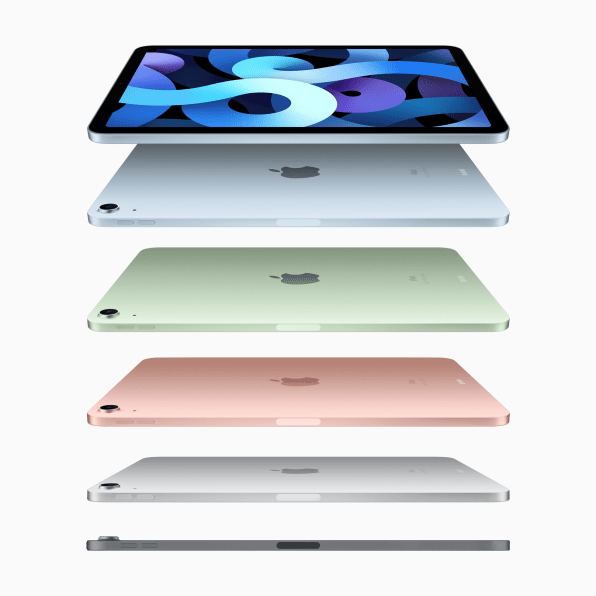
The age of general purpose-ability
Back in 2010, when Steve Jobs unveiled the original iPad, he took pains to explain why it deserved to exist, sparking a conversation that continued on long thereafter. “Steve talked about it as being in this space between the phone and the Mac,” says Ternus. “And of course it was that. And there was a lot of debate over, ‘Is it just for content consumption or is it going to be used for creation?’ Everyone talked about that ad nauseam.”
A decade later, anyone who maintains that the iPad is fundamentally unsuited for creativity is tilting at reality. But its place in the computing world remains an elusive enough question that even Apple’s take on the topic has veered in different directions over the years. In various ads, the company has declared both that the iPad Pro is a computer and that it isn’t one; most recently, it has split the difference with the tagline “Your next computer is not a computer.”
Then there’s the competitive landscape, which is complicated by the fact that the iPad’s most obvious would-be rivals—Android tablets—have never really caught on. At its Tuesday event, Apple bragged that the eighth-generation iPad is twice as fast as the top-selling Windows laptop and six times as fast as the top-selling Chromebook. It also said that the new iPad Air has double the graphics performance of a chunky HP laptop running Windows. That suggested that the company thinks it might steal some customers away from such devices—and yet it’s certainly not the same thing as saying that an iPad is something like a Windows laptop or Chromebook, only faster.
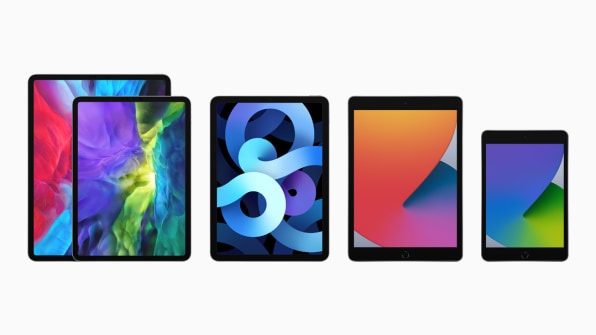
Nothing about the new iPad Air smacks of an old model being merely repackaged under a new name.
Any instance of a company describing its own products as “magical” is not merely descriptive, of course. But the term is open-ended enough to cover not just the first decade’s worth of iPad evolution but also the years to come.
“What’s great is that people are discovering all sorts of new magical things to do,” says Borchers. Ternus’ s favorite past example of such discovery—which he says Apple could never have anticipated—is airlines dumping their flight bags full of charts and replacing them with iPads: “They wouldn’t have done that with a laptop. They wouldn’t have done that with, with the phone.”
Air apparent
When the first iPad Air appeared in 2012, it got its name by being 20 percent thinner, 28 percent lighter, and 11 percent narrower than the iPad it replaced. Once that form factor became familiar, Apple went back to calling its successors just “iPad.” But the company revived the iPad Air moniker last year for a tablet that felt like a reworking of the previous-generation 10.5-inch iPad Pro.
Nothing about this year’s new iPad Air smacks of an old model being merely repackaged under a new name. The goal, says Ternus, is to take “some of the super-compelling and really broadly applicable features from the Pro and try to get them into a more accessible price point.”
The new Air has the Pro’s striking industrial design with no home button, a narrow bezel, and squared-off edges. It works with the much-improved second-generation Pencil, which charges as it clings magnetically to the side of the tablet. It uses USB-C instead of Lightning, so that you can do things like plug in external storage. And it’s compatible with the Magic Keyboard, for the most laptop-like experience available on an iPad, complete with trackpad.
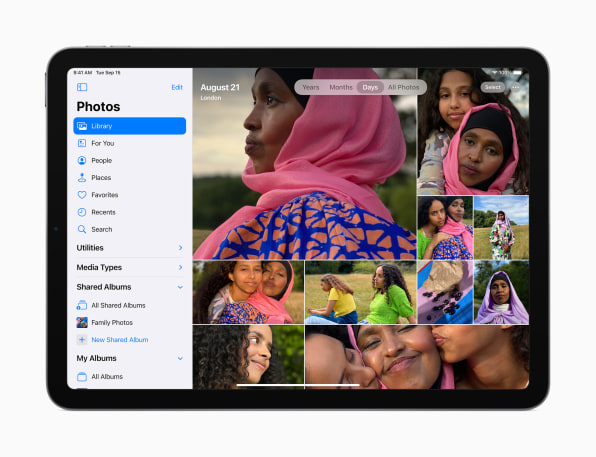
Three years into the Face ID era, it’s startling to see Touch ID alive, well, and evolving. (For Touch ID fans such as my colleague Mark Wilson, its continued existence is even downright refreshing.) And even if the new flavor of the technology in the Air has something to do with hitting a price point—something Apple isn’t going to acknowledge—it was far from a quick-and-dirty effort.
Compared to the home button’s nice, round sweet spot, the top button has “a super narrow aspect ratio that we never had before,” says Ternus. “And we had to do a tremendous amount of work at the sensor level, the silicon level, and also from an algorithm standpoint. Because when you think about it, the sensor is seeing a much narrower slice of the fingerprint. And so what we actually have to do is capture a broader area so that at any given time, if you shift a little bit to the right or a little bit to the left, we can still make that match.”
Apple VP of engineering John TernusFrom the very beginning . . . the Touch ID team and the antenna team were joined at the hip.”
Besides the Touch ID-enabled power button, the other all-new feature in the iPad Air is its processor—Apple’s A14 Bionic, which is new not just to the Air but to company’s entire product line. During the launch video, VP of Platform Architecture Tim Millet called it “by far the most advanced chip we’ve ever made.” The A14’s debut in the Air alone presumably stems from this year’s iPhones being delayed for a few weeks past their traditional September launch. But it was one of the things that left Twitter abuzz with people trying to get their head around why they’d buy an 11-inch iPad Pro when the new iPad Air matches so many of its features, packs Apple’s latest processor, and starts at $599 rather than $799.
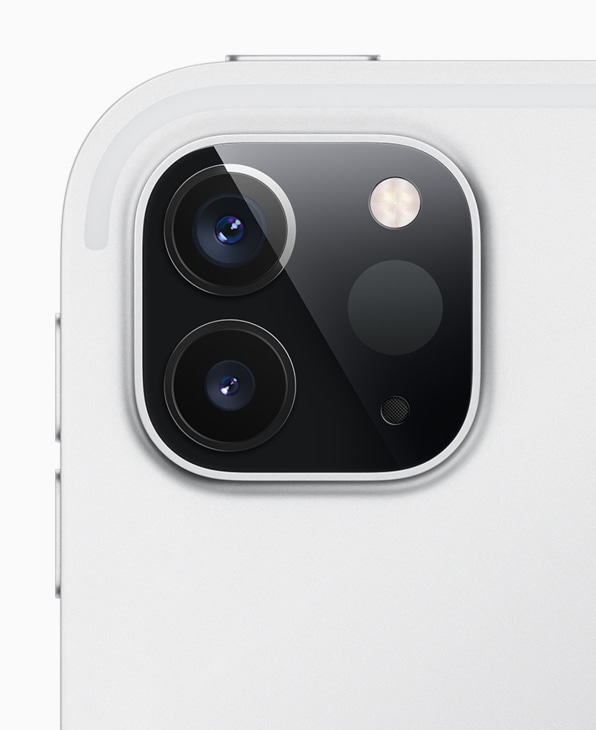
As for that shiny new A14 chip, Borchers says that the iPad Pro’s A12Z processor—which has eight GPU cores compared to the A14’s four—will outperform it in certain “graphic-intensive kinds of workloads and workflows.” It may therefore be better tuned for the most demanding professional users. There are other scenarios, he adds, where the A14 will outperform the A12Z.
One hint of Apple’s mental dividing line between Air and Pro is apparent in the color options available for the two models. The iPad Pro is available only in buttoned-down space gray and silver, while the Air adds rose gold, sky blue, and green variants, making for the largest and liveliest color selection for any iPad to date. Why expand the palette? “We really do want this to be accessible and, and personal and more consumer than pro in terms of the way that people look at it and think about it and interact with it,” says Borchers.
In the end, Apple thinks that nudging the iPad Air quite far into the iPad Pro’s territory has more upside than downside. “What we hope to see is a lot of people that maybe would have gotten an entry-level iPad will be pulled up to this iPad Air, because it’s so compelling and exciting,” says Ternus. “And if some of the people who would have gotten an iPad Pro decide that the iPad Air is a better fit for them, I think that’s fine, too.”
AI everywhere
The new entry-level, eighth-generation iPad that’s neither an Air nor a Pro can be summarized rather efficiently. It’s still an iPad in its most classic form, with a Touch ID-equipped home button and Lightning port. Like last year’s version, it has a 10.2-inch display and a starting price of just $329.
What’s new is the A12 Bionic processor, the same Apple chip that powered last year’s iPad Air. Along with the usual bragging rights relating to raw performance—Apple says it’s got a 40% faster CPU and twice the graphics performance of last year’s version—it’s the first entry-level iPad with the Neural Engine, Apple’s name for its dedicated circuitry for handling AI tasks. While some of the features the Neural Engine supports on other devices—such as Face ID, Memoji, and Animoji—still aren’t available on this iPad, the technology should be a boon to other advanced tasks. (At its event, Apple showed it helping with photo recoloring and an app that monitors tennis swings in real time.)
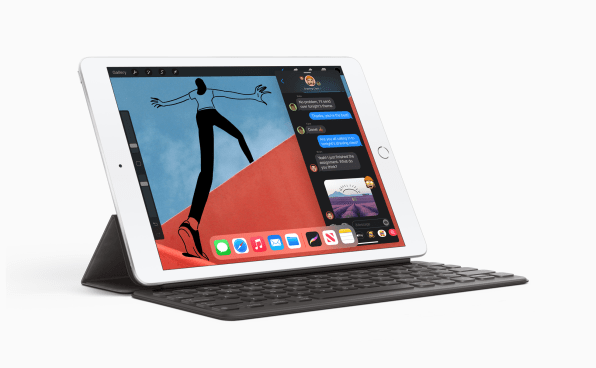
(Speaking of the iPad Mini, which starts at $70 more than the eighth-generation iPad and was last updated in March 2019, even Apple sees it as a bit of an outlier from the good-better-best continuum of the eighth-generation iPad, iPad Air, and iPad Pro: As an iPad for people who prefer a small tablet, Ternus says that it “sits alongside its bigger siblings and kind of serves its own purpose.”)
Apple being Apple, the thing it’s proudest of is never a more powerful chip or a reengineered form of authentication or even a new device or operating-system upgrade. It’s how all the elements meld into something that is, at its best, seamless. Even one of the most significant areas of updating in iPadOS 14–robust new features for handwriting with the Pencil stylus, such as Scribble, which lets you write into any text field instead of typing—isn’t just a software update.
“This idea of trying to create the best inking experience, the best writing experience, with low latency and all of that, that can’t just happen,” says Ternus. “The hardware team can’t do it by themselves. The software team can’t do that by themselves. Everyone had to work together to do that.”
For all the things Apple won’t tell us about its plans for iPads beyond the new crop, it’s a safe bet they involve that sort of cross-pollination. Then again, if the past is any indication, the future of the iPad will hold surprises even for the company that makes it. “It’s been a pretty amazing 10 year journey,” says Borchers. “Personally, I’m super excited to see what the next 10 years bring.”








 User Center
User Center My Training Class
My Training Class Feedback
Feedback











